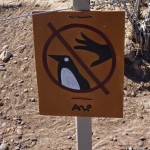Imagine yourself sometime before the thirteenth century, and someone in your community gets the idea that they would like to build a movable island in case a group wanted to attack you and your family. You then proceed to construct a floating island out of local reeds, adding layer upon layer until you had a stable surface in which you could live on. One bonus is if you ever got mad at your neighbor, you could simply cut off your part of the floating reed island. To keep your new home from sinking or deteriorating, you would cut and add new layers of reeds as needed.
For the Uros, a pre-Incan people, they did just this. Today, Lake Titicaca is listed as a UNESCO World Heritage Site and is South America’s largest freshwater lake and also the highest navigational lake in the world. To me, it’s pretty darn cool – a group of people who thought of building their own islands out of reeds and then living on them. They made watch towers, were ready for potential attacks, raised families, cooked meals and adapted to all the requirements of living on a bunch of floating reeds.
Visitors can access Lake Titicaca from either Peru or Bolivia. Some say the Bolivian side is better, others say the Peruvian side is better and some claim it doesn’t matter claiming the islands have changed too much from what they were in the past. I think taking a spin around the world’s highest altitude navigable lake and hanging out on a floating island for a while is worth it. Here is how our day started.
We boarded a boat with the Peruvian flag waving in the breeze and cruised down this channel…
…past mirrored reflections of fluffy clouds.
Any boat entering the islands had to stop at this check point.
Then we were granted permission to proceed.
I simply stared at this scene to comprehend of all the hundreds people living on these floating islands.
When we first arrived to the island we sat on the benches the villagers had constructed.
Then our guide, on the left, and the president, on the right, gave a visual presentation of how they build these islands, maintain them and how the community works together.
Each year a different person from the community takes a turn to be the president.
I thought this representation was one of the most precious things I saw on this trip.
The villagers built or sewed everything you see above.
We could wander around the 200 foot island radius, look at souvenirs and were allowed to look inside the island huts.
The huts are built up with extra reeds to ensure the bottoms do not get wet.
This was the inside.
The bed was made of reeds and was not soft.
When ones livelihood depends on the health of the water and ecosystems working together, it baffles me to try imagine myself being ok to live with garbage directly outside my door.
Did you notice these birds drying in the sun from the photo above?
As you could imagine, a fire would be devastating to a house made out of dried reeds and cooking was done outside.
It was humbling and I still struggle to express the emotions I felt looking in these huts containing most of this person’s entire life possessions.
Then it was time to say goodbye and the villagers came out to sing us a song.
We were rowed over to a cafe before we left.
Traditional hair pieces worn by many women.
Ladies were rowing boats all over the lake.
Find yourself low on crackers or matches?
This movable store goes to the islands selling snacks, dish soap, toilet paper and all sorts of other miscellaneous items. That’s one way to make a living.
At the cafe, the reeds were recently replaced and you can see how much greener they are here than previous photos.
Layers of reeds seen below the water.
The president told us it was ok for the the ladies to wash clothes directly in the lake, despite the fact the locals drink the lake water. He believed the soap would go away because the lake is so big.
Backyard of the family that ran the cafe.
What a cool watch tower.
The totora is the name of the reed used for building the islands, huts and boats. When a fresh reed is pulled up, the lower part consist of a soft, white material that is edible with a very mild onion-ish flavor.
I took a quick rest on the reeds.
But what about the bathrooms!?
When people need to use the bathroom, at least for No. 2, the nearest bathroom is a kilometer away. Everyone piles onto a boat and rows themselves to the bathroom.
I felt a certain romanticism visiting these floating islands under these bright blue skies, yet it seemed a challenging way to live daily life.
As we talked with other tourists there were mixed opinions about the floating islands of Lake Titicaca. Some people loved the island tours expressing it was the coolest thing ever to be on standing on those reeds, while others felt it was horrible exploitation of locals. Many of the young people don’t want to live on the islands when they see all the luxuries and money they can have in town.
So what’s a visitor to do? Do your best to book a tour that fairly distributes the money and enjoy visiting the islands for what they are. Personally, I hated seeing all the trash in the water in this UNESCO heritage site, yet I loved the opportunity to experience a small bit of time in this unique way to live. I can’t say I would want the hardships that lifestyle entails and I was happy to pay the tour fee in hopes it goes towards helping sustain theirs.
Remove the debate as to whether the islands are ‘good or bad; fake or authentic’, I think this was a pretty amazing way to adapt, survive and create a life.
Humans have such an amazing ability to problem solve; it’s a wonder we have all the issues that we have.
Maybe we can all take a lesson from the Uros people and realize if we are not happy with the world around us, we possess the ingenuity to construct a life where we might have thought it was impossible. It will simply require constant work to keep that life a float.
* * *
If you go:
Be prepared to pay a little bit extra money for the ladies to row you around in a boat, that part is not included in the tour, they don’t tell you that, and it would be somewhat awkward not to get rowed around in the boat.
The islanders do have crafts for sale that are of high quality. If you are looking for gifts, you may find some nice options and it will be a cool story when you tell people where you got them from.






























 Previous Post
Previous Post Next Post
Next Post
My fingers just ache thinking of all that weaving, that is a LOT of reeds! Nice article of an unusual life style.
It is a lot of reeds. It was so interesting all the correlations with the reeds providing food, shelter, a mass of land to live on, sources of income from the handicrafts the make out of them, mode of transportation. The reeds are so integral to their lifestyle.
Places are beautiful. but it is very hard to live in this kind of places. people always struggle for their life in these places.
Indeed Sally, Lake Titicaca was so beautiful, but the struggle to maintain a high standard of living was obvious. Hopefully visitors will do their best to put money towards fair, sustainable tourism. Thanks for the comment!
I always love the colors of South America. Their culture is so warm, bright, vivid and inviting. It is hard not to want to check it out.
I know what you mean! Those ladies on Lake Titicaca, their fabrics were so beautiful!
WOW! Very cool but looks like a hard life. Did I see solar panels in a couple of your pics and were those sun dried ducks for eating or something else?
Yes, there are solar panels. The people living on the islands do not disapprove of the modern conveniences. Some families use motor boats, solar panels, maybe a generator to have one fridge for the community to share.
As far as I know, the birds were for eating. But now I am wondering what they were going to make out of them. Guess we’ll just have to go back one day and find out! 🙂
Нello, jսst wanted to tell yߋu, I likedd tɦis blog post.
It wаs inspiring. Keеp on posting!